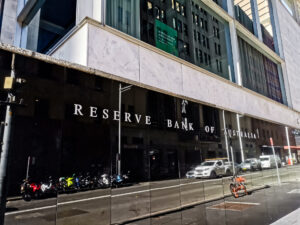The build up of savings during the pandemic is over – now we need strong income growth to keep the economy going as the Reserve Bank tries to slow it.
The September quarter GDP figures reinforced the precarious nature of Australia’s economy.
The annual GDP growth of 5.6% is extremely strong, but as Fiscal and Labour market policy director, Greg Jericho notes in his Guardian Australia column, the past three quarters have seen a slowing of growth with the economy growing just 0.6% in the September quarter.
Largely the economy has been supported by household spending, and yet even here we see a slowing as household disposable income fails to keep pace with inflation.
All of this comes at a period when the Reserve Bank is slamming on the brakes. Since the end of the September quarter the Reserve Bank has raised the cash rate by 75 basis points. And given that the impact of the rate rises in August and September would not be fully realised in the September quarter GDP figures, the economy is likely to keep slowing for some time more.
The national accounts reveal that much of the inflation in the economy is in areas outside of the influence of the RBA – imports and energy costs – while areas such as house prices that are affected by rate rises have already slowed sharply.
Given that household saving levels are back where they were prior to the pandemic, this means household spending must come from real growth in incomes. That will be hard to sustain if the economy slows further.
The rate rises have already slowed the economy and with more rises and more slowing on the way, that makes 2023 a worrying year ahead.
Between the Lines Newsletter
The biggest stories and the best analysis from the team at the Australia Institute, delivered to your inbox every fortnight.
You might also like
As inflation falls, the Reserve Bank is Missing in Action
With inflation within the RBA’s target range, interest rates should be cut, but unfortunately Australians will have to wait for the Reserve Bank board to get back from holidays.
Delayed RBA cut is welcome, but borrowers are still lagging
The RBA has cut interest rates – five weeks too late.
Fearful and frozen: Why the Reserve Bank continues to err on rates
The RBA’s failures have real consequences. It should go back and closely reread the recommendations of the RBA review, particularly the ones that encourage it to open up to new and diverse viewpoints.


